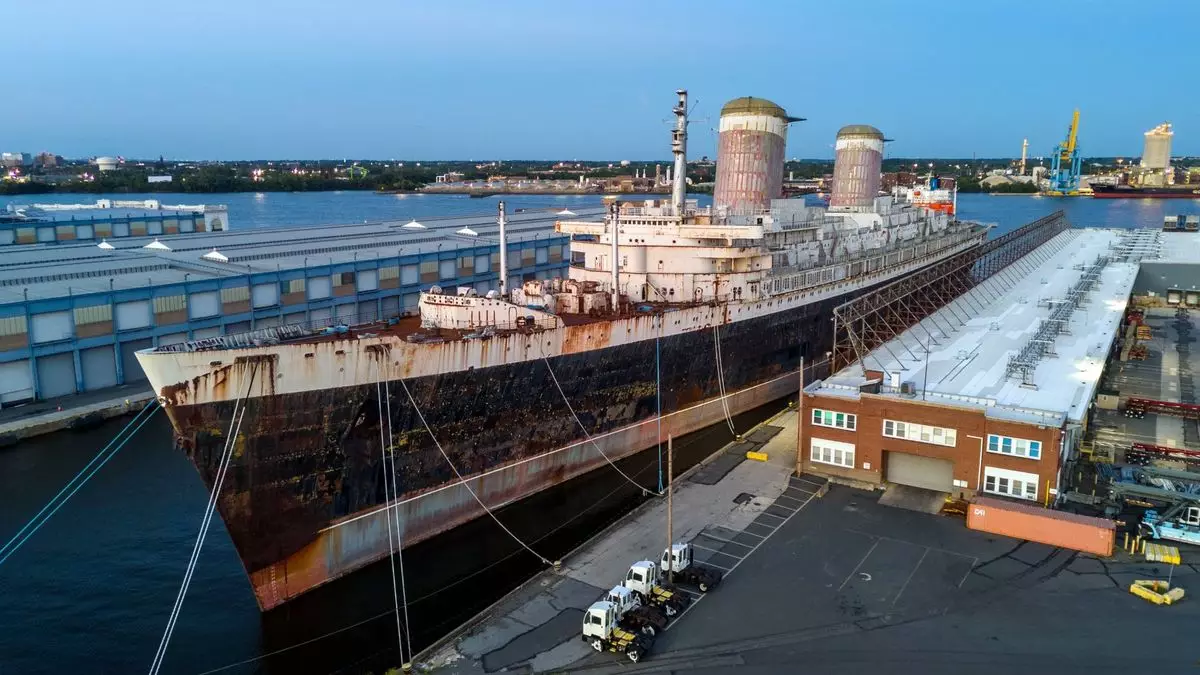The SS United States, once a crown jewel of maritime transport, now faces a poignant conclusion to its storied life. This monumental vessel, celebrated for its speed and grandeur during the mid-20th century, is potentially set to become an artificial reef off the coast of Florida—raising questions about its legacy and the future of historical preservation in the maritime domain.
The SS United States, affectionately known as “the Big U,” became a symbol of American prowess on the Atlantic when it launched in 1952. It was not only remarkable for its sleek design but also for its performance. With the ability to cruise at an astonishing pace of 44 knots, the ship claimed the illustrious Blue Riband for the fastest transatlantic crossing, a record that remains unbroken. Transporting people and goods across the Atlantic, the SS United States defined an era where sea travel was integral to international connection and commerce.
The vessel was engineered for versatility as well. Designed to operate as a troop carrier capable of transporting up to 14,000 soldiers without refueling over long distances, the ship exhibited a unique dual-purpose functionality that was invaluable during its operational years. However, as jet flight emerged and travel preferences shifted, the SS United States saw a swift decline in relevance, ultimately leading to its cessation of active service in 1969.
Since being docked in Philadelphia in 1996, the SS United States has been maneuvered through a series of ownership transitions and preservation efforts, all harnessed by the efforts of the SS United States Conservancy. Funded by passionate donors, the conservancy aimed to restore the ship either as a mixed-use facility, similar to the Queen Mary in Long Beach, or to preserve it in some historical capacity. Over the years, multiple proposals have surfaced—from Norwegian Cruise Line’s attempts to refurbish and relaunch the vessel to Crystal Cruises’ ambitious plans that ultimately faltered due to financial and logistical challenges.
More recently, the conservancy expressed its commitment to keep the Big U from being reduced to scrap metal. The ongoing efforts reflect not only a desire to preserve maritime history but also to utilize the ship as a potential tourist attraction. This dedication, however, faced increasing urgency as the vessel faced the threat of eviction from its long-standing berth, highlighting the struggles of maintaining historical vessels in the face of urban development and economic pressures.
The recent announcement regarding the ship’s potential transition to an artificial reef has sparked a multifaceted discussion about its future. The Destin-Fort Walton Beach tourism board’s proposal underscores a vision for environmental engagement through marine conservation efforts. As an artificial reef, the Big U could provide vital habitats for marine life, aligning with the region’s goals to boost biodiversity and enhance local fishing environments.
Such a transformation not only seeks to preserve the ship in a novel way but also positions it as a unique attraction for divers and tourists. As stated by Jennifer Adams, the tourism director of Destin-Fort Walton Beach, the presence of the SS United States could offer an exhilarating dive experience while simultaneously benefiting local fisheries. This dual emphasis on tourism and ecological conservation reflects a broader trend in which historical maritime vessels are repurposed to serve environmental goals.
While the ruling from the Okaloosa County Board of Commissioners represents a significant step towards this new chapter, significant logistical challenges remain. The ship’s journey toward becoming an artificial reef will involve substantial clean-up processes and transport arrangements that could take upwards of a year and a half. Financial estimates suggest that the costs associated with this endeavor could reach over $10 million, not accounting for additional funds needed for the establishment of a museum dedicated to the vessel’s history and significance.
This bridging of history with future technological innovation presents both challenges and opportunities. Preserving the legacy of the SS United States while positioning it as a catalyst for marine ecological renewal reflects a complex negotiation between history and progress.
As the SS United States prepares for what could be its final role, the question of its legacy remains deeply embedded in public discourse. Transitioning from a revered transatlantic liner to a cherished underwater habitat encapsulates both the triumphs and tribulations of America’s maritime history. Ultimately, the success of this plan could redefine the role of historic ships in ecological conservation, serving as a new way for society to honor its past while actively participating in the stewardship of our oceans.


Leave a Reply